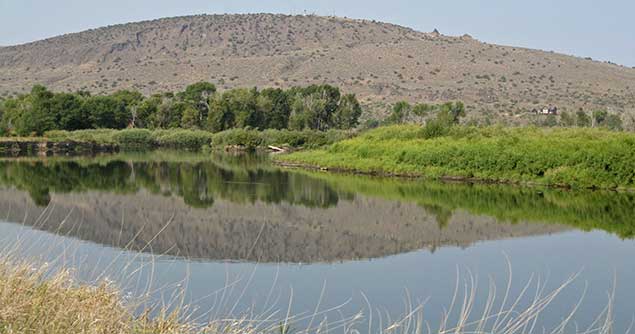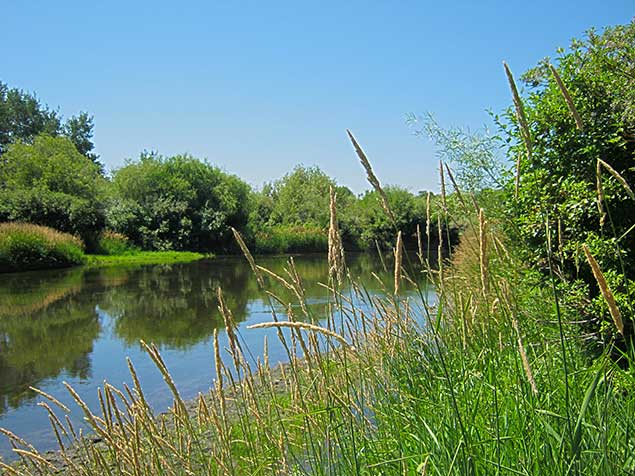Idaho Featured Partnership
In Idaho, the BLM has long depended on community partnerships to enhance public lands and carry out its multiple-use and sustained yield mission. Local communities are natural partners for BLM because public lands are often the backyard for many residents of the West. Partnerships help accomplish community goals and effectively stretch taxpayer dollars by sharing limited funds and specialized knowledge. This collaboration helps the BLM protect fragile resources; improve rangeland health; maintain popular community trails; support a wide range of recreational, educational and interpretive activities; and help visitors enjoy the public lands and understand their value.
Featured Partner Story
Working together, the Bureau of Land Management, conservation organizations, and local landowners are protecting prime riparian habitat along Henry’s Fork of the Snake River.
In December 2015, the BLM purchased a conservation easement along the Henry's Fork of the Snake River with Land and Water Conservation Funds funds. The family, who wishes to stay anonymous, had worked with the BLM and Teton Regional Land Trust for several years to make the protection of these 160 acres possible.

Conserving this property, located within the Snake River and Henry’s Lake Areas of Critical Environmental Concern meets BLM’s goals of maintaining open space, scenic vistas and protecting crucial wildlife habitat.
The area provides habitat to a number of wildlife species designated by the Idaho Department of Fish and Game as “species of greatest conservation need.” Species include: sandhill crane, trumpeter swan, northern pintail, hooded merganser, american white pelican, white-faced ibis, california gull, franklin’s gull black-crowned night-heron, bald eagle and swainson’s hawk.
This landscape ensures connectivity for wildlife moving along the river corridor and supports a variety of vegetative communities including cottonwoods, willow, water birch and other wetland vegetation, sagebrush steppe and cultivated fields.
Protection of the property also provides open space and uninterrupted scenic views to members of the public floating and fishing here.

Over many decades, BLM has utilized LWCF funds to create a living legacy on lands in southeast Idaho,"" said Idaho Falls District Manager Mary D'Aversa. “These funds assist the BLM in funding collaborative conservation efforts. Dedicated staff and partners build positive relationships with landowners and can continually seek out potential conservation opportunities.”
The BLM’s partnership with LWCF began in 1991 in response to the imminent threats of subdivision and resort development in the area, the great potential of many conservation projects across a large geographic scope, and the diversity of landowners along the Snake River corridors and Henry's Lake. Three non-profit conservation organizations including The Conservation Fund, The Nature Conservancy and the Teton Regional Land Trust, operate independently to accomplish common conservation goals. They also collaborate as a team with the BLM to acquire critical properties from willing land owners.
"These partnerships are key to a successful program," said D'Aversa. "They facilitate an important dialogue between private landowners and the government and are valuable in assisting landowners through the conservation process."
By identifying and protecting these areas, the BLM and its partners will continue to be able to secure natural and cultural heritage resources, open space, public recreational access, traditional agricultural and commercial recreation.
